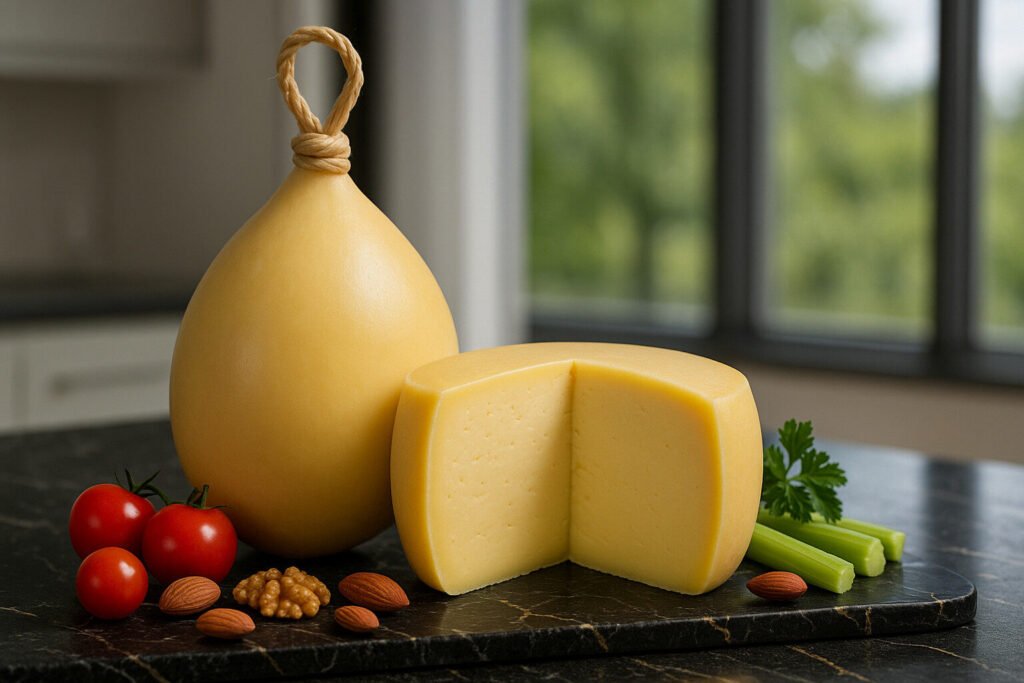Provolone
Definition and Scope
Provolone is a semi-hard Italian pasta filata cheese made from cow’s milk. It belongs to the stretched-curd cheese family, which undergoes a unique plasticization and kneading process in hot water. This technique gives Provolone its characteristic smooth texture and allows it to be formed into various shapes, often pear-shaped with a rope tie.
Two primary varieties exist: Provolone Dolce, aged for two to three months with a mild flavor, and Provolone Piccante, aged over four months for a sharper taste. Its production is protected under the European Union’s Protected Designation of Origin status, primarily from regions in Northern Italy. This cheese is a staple in Italian cuisine and is exported worldwide.
Production Process
Provolone production begins with pasteurized cow’s milk, which is heated and inoculated with thermophilic starter cultures. Rennet is added to coagulate the milk into a firm curd, which is then cut into small pieces to release whey. The curds are subsequently heated and stretched in hot water or whey, a defining step for pasta filata cheeses.
After stretching, the pliable curd is molded into traditional shapes and brined for salting. The cheese is then hung to dry and aged in controlled environments. Aging duration directly impacts flavor, ranging from a few months for Dolce to over a year for Piccante variants, developing a natural rind.
Sensory Profile
Provolone Dolce exhibits a pale yellow color, a smooth, firm texture, and a mild, buttery flavor with slight tanginess. Its aroma is delicate and milky, making it approachable for a wide range of palates. The cheese melts well, contributing to its versatility in cooked dishes.
Provolone Piccante has a deeper yellow hue and a firmer, denser texture due to extended aging. Its flavor is robust, piquant, and slightly salty, with nutty and smoky notes. The rind is often darker and thicker, adding to the cheese’s complex sensory characteristics.
Culinary Uses
Provolone is widely used as a table cheese, served in antipasto platters alongside cured meats and olives. Its excellent melting properties make it ideal for sandwiches, paninis, and baked pasta dishes like lasagna. The mild Dolce variety is often preferred for melting, while Piccante is grated over dishes.
In cooking, Provolone enhances flavor in stuffings, sauces, and casseroles. It is a key component in traditional Italian recipes such as chicken cordon bleu and eggplant parmesan. Its ability to hold shape when melted also makes it suitable for grilled cheese applications.
Regional Examples
Authentic Provolone is primarily produced in the Po Valley regions of Lombardy and Veneto in Northern Italy. These areas provide the ideal climate and dairy resources for traditional methods. Provolone Valpadana holds PDO status, ensuring adherence to strict geographical and production standards.
Outside Italy, Provolone-style cheeses are made in countries like the United States and Argentina, often adapting techniques to local conditions. However, these versions typically differ in flavor profile and texture from their Italian counterparts due to variations in milk source and aging practices.

